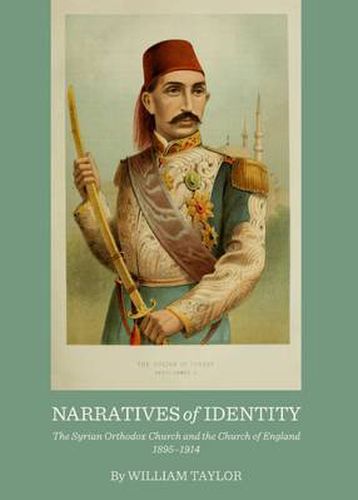Readings Newsletter
Become a Readings Member to make your shopping experience even easier.
Sign in or sign up for free!
You’re not far away from qualifying for FREE standard shipping within Australia
You’ve qualified for FREE standard shipping within Australia
The cart is loading…






The relationship between the Syrian Orthodox Church in the Ottoman Empire and the Church of England developed substantially between 1895 and 1914, as contacts between them grew. As the character of this emerging relationship changed, it contributed to the formation of both churches’ own ‘narratives of identity’. The wider context in which this took place was a period of instability in the international order, particularly within the Ottoman Empire, culminating in the outbreak of the First World War, effectively bringing this phase of sustained contact to an end. Narratives of Identity makes use of Syriac, Garshuni, and Arabic primary sources from Syrian Orthodox archives in Turkey and Syria, alongside Ottoman documents from the Basbakanlik Osmanli Arsivi, Istanbul, and a range of English archival sources.The preconceptions of both Churches are analysed, using a philosophical framework provided by the work of Paul Ricoeur, especially his concepts of significant memory (anamnesis), translation, and the search for mutual recognition. Anamnesis and translation were extensively employed in the formation of ‘narratives of identity’ that needed to be understood by both Churches. The identity claims of the Tractarian section of the Church of England and of the Ottoman Syrian Orthodox Church are examined using this framework. The detailed content of the theological dialogue between them, is then examined, and placed in the context of the rapidly changing demography of eastern Anatolia, the Syrian Orthodox ‘heartland’. The late Ottoman state was characterised by an increased instability for all its non-Muslim minorities, which contributed to the perceived threats to Ottoman Syrian Orthodoxy, both from within and without.Finally, a new teleological framework is proposed in order to better understand these exchanges, taking seriously the amamnetic insights of the narratives of identity of both the Syrian Orthodox Church and the Church of England from 1895 to 1914.
$9.00 standard shipping within Australia
FREE standard shipping within Australia for orders over $100.00
Express & International shipping calculated at checkout
The relationship between the Syrian Orthodox Church in the Ottoman Empire and the Church of England developed substantially between 1895 and 1914, as contacts between them grew. As the character of this emerging relationship changed, it contributed to the formation of both churches’ own ‘narratives of identity’. The wider context in which this took place was a period of instability in the international order, particularly within the Ottoman Empire, culminating in the outbreak of the First World War, effectively bringing this phase of sustained contact to an end. Narratives of Identity makes use of Syriac, Garshuni, and Arabic primary sources from Syrian Orthodox archives in Turkey and Syria, alongside Ottoman documents from the Basbakanlik Osmanli Arsivi, Istanbul, and a range of English archival sources.The preconceptions of both Churches are analysed, using a philosophical framework provided by the work of Paul Ricoeur, especially his concepts of significant memory (anamnesis), translation, and the search for mutual recognition. Anamnesis and translation were extensively employed in the formation of ‘narratives of identity’ that needed to be understood by both Churches. The identity claims of the Tractarian section of the Church of England and of the Ottoman Syrian Orthodox Church are examined using this framework. The detailed content of the theological dialogue between them, is then examined, and placed in the context of the rapidly changing demography of eastern Anatolia, the Syrian Orthodox ‘heartland’. The late Ottoman state was characterised by an increased instability for all its non-Muslim minorities, which contributed to the perceived threats to Ottoman Syrian Orthodoxy, both from within and without.Finally, a new teleological framework is proposed in order to better understand these exchanges, taking seriously the amamnetic insights of the narratives of identity of both the Syrian Orthodox Church and the Church of England from 1895 to 1914.